Start 14-Day Trial Subscription
*No credit card required

The World's Strongest Beers
Rounded Up a List of the Strongest Beers
Taking on the world’s strongest beers is a challenge. Strong beers typically have bold tastes and specified drinking conditions.
While most of the world’s strongest beers can be found outside of taprooms, they’re often rare and expensive. Extremely strong beers can be found the world over, in styles ranging from Belgian blond ale to IPA.
Our list showcases strong beers above 18 percent ABV, with one entry per producer. We’re also sharing brewing and drinking secrets for these powerful concoctions.
For this list, many of these mammoth brews were created using a process called "fractional freezing," which is the same method used to create the Eisbock beer style. Fractional freezing involves chilling the beer to a temperature that freezes the water but leaves the alcohol in a liquid state.
Though the BJCP Style Guidelines feature no beers above 14 percent ABV (Eisbock), the breweries that created these behemoths market their creations as beers. Because of that, they are presented on this list as extremely high-ABV brews.

Snake Venom, 67.5 percent ABV
Brewmeister
Scotland, released in 2013
Snake Venom is a dark amber beer with a hoppy, malty, sweet taste that doesn’t give away its high alcohol content, though you begin to feel the burn a few sips in. This English Barleywine is made with Scottish spring water, smoked peat malt, beer yeast and champagne yeast. It’s meant to be drunk ice cold.
Snake Venom is created with fractional freezing, a process that involves chilling the beer to a temperature that freezes the water but leaves the alcohol in a liquid state. The brewer then removes the ice and adds ethyl alcohol to increase the ABV. At 67.5 percent ABV, this beer is stronger than most vodkas or whiskies, which typically clock in at 40 percent ABV. The typical ABV for an English barleywine is 8 to 12 percent.
Snake Venom is extremely dense, heavy with alcohol and uncarbonated. Reviews about its taste and drinkability vary. Some customers say it’s toasty and pleasant. Others compare it to gasoline. The beer comes with a warning label stating it be drunk 35 ml at a time, the amount that’s in a shot glass. A nine-ounce bottle typically retails between $75 and $80.
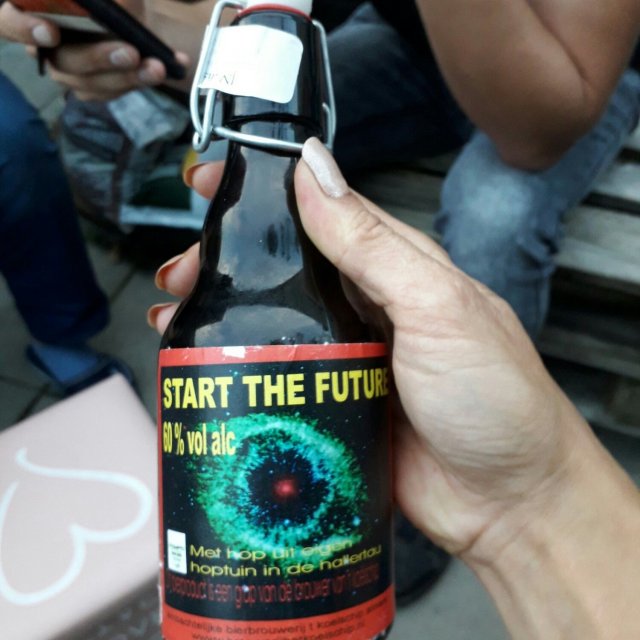
Start the Future, 60 percent ABV
Brouwerij 't Koelschip
Netherlands, released in 2010
Start the Future is a pale-yellow beer with a sweet and tangy taste. It’s uncarbonated and thick, with a bitter aftertaste. Customers have called the flavor peppery and soapy. This beer, made with water, malt, hops, and yeast, is a German Eisbock. The style typically has an ABV of 9 to 14 percent. It’s recommended that you drink it in small doses, such as from a shot glass. A one-third liter bottle costs about $45.
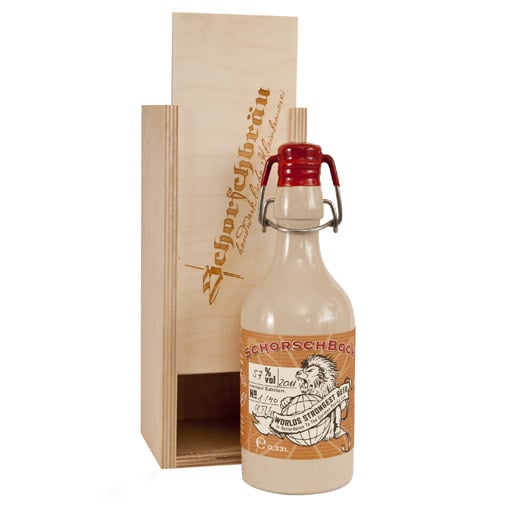
Schorschbock 57, 57.5 percent ABV
Schorschbräu
Germany, released in 2011
The beer is dark brown and hazy, with very little carbonation. Some customers described it as tasting of soy sauce and molasses, with a strong burn. Others thought it was smoky and nutty, with a tropical or raisin-like flavor. The beer is sweet, with legs like wine. This German Eisbock is hard to find, given that only 36 numbered bottles were produced. A 40-ml bottle costs about $200.
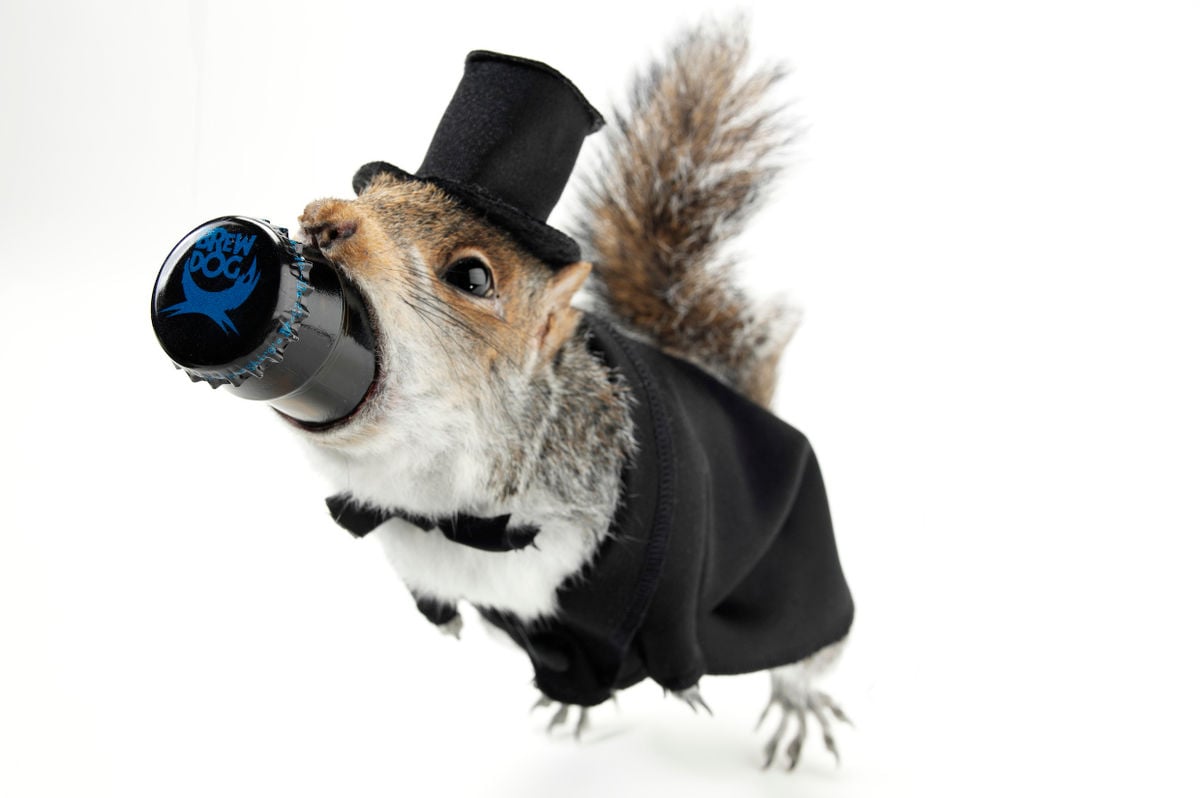
The End of History, 55 percent ABV
BrewDog
Scotland, released in 2010
This Belgian blond ale is famous for its novelty status. Only 12 bottles were made. The beer was mixed with nettles and juniper berries from the Scottish Highlands and then fractionally frozen. Each bottle was stuffed inside a taxidermied roadkill animal such as a weasel, squirrel or hare. The bottles cost about $933 each. Each buyer received an equity stake in the brewery’s “Equity for Punks USA” crowdfunding campaign. The purpose of the campaign was to raise $50 million so BrewDog could open a Columbus, Ohio brewery. That effort succeeded, with the brewery’s Columbus location opening in 2018.

Espirit de Noël, 40 percent ABV
Baladin
Italy, released in 2011
This is a bright yellow distilled beer, with a smooth feel and notes of wood and chocolate. It’s meant to be served cold, at about 50 degrees Fahrenheit. Espirit de Noël was made by aging the beer for three years in oak barrels. This beer is one sample of Italy’s development in craft brewing. Espirit de Noël comes in half-liter bottles, with a price of around $40.
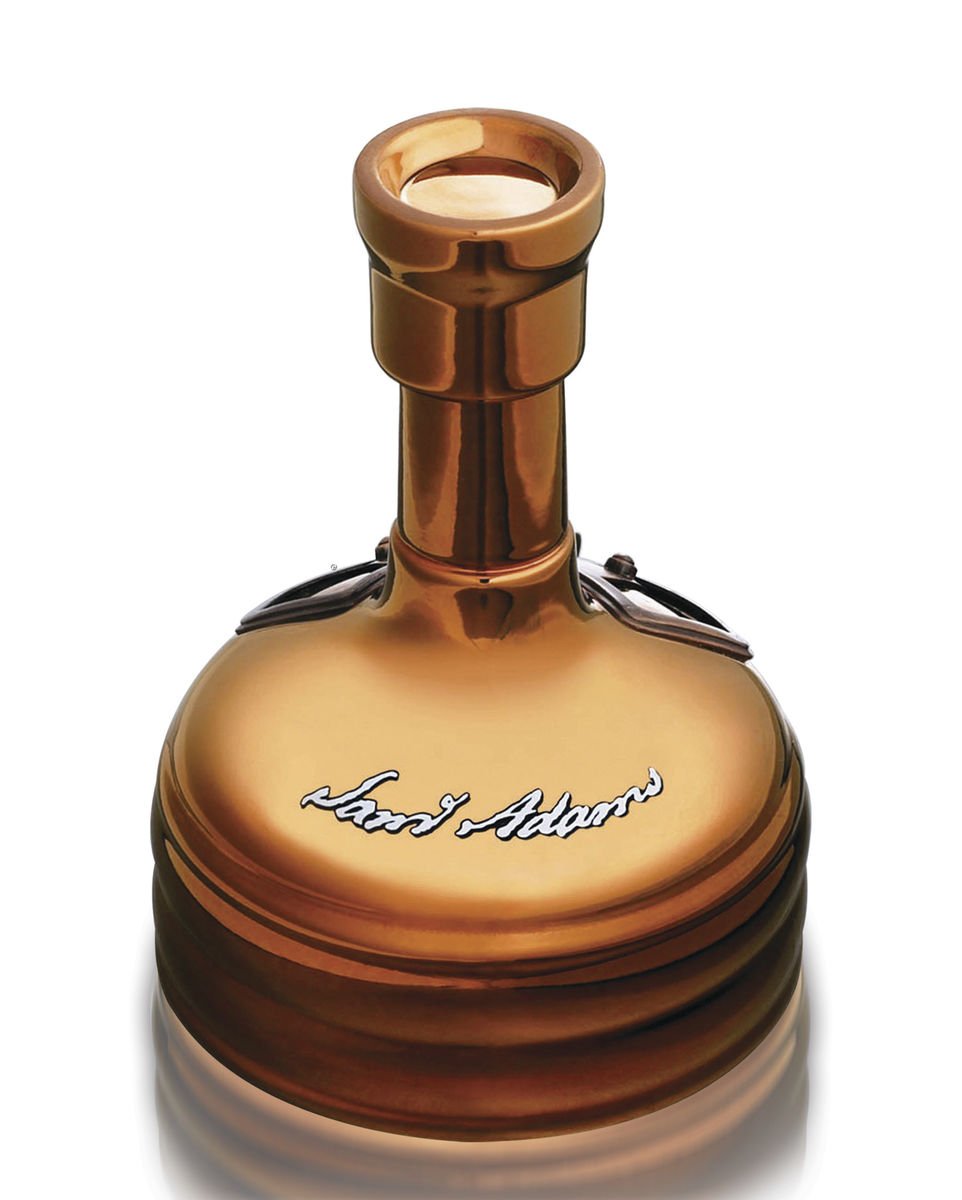
Samuel Adams Utopias, 28 percent ABV
The Boston Beer Co.
U.S., released every two years since 2002, with this year’s Utopias to be released in October 2019
Utopias, a ruby black barrel-aged beer, evolved from Sam Adams Triple Bock, a record-setting 17.5 percent ABV beer made in 1994.
“The beer morphed into Utopias as the alcohol kept getting stronger,” said Jim Koch, founder and brewer of Samuel Adams.
Koch said Utopias is assembled from a library of casks dating back to 1993.
“This year’s release has a bright, fruity character on top of the base Utopias flavors, vintage Port, a fine ‘old oak’-toned cognac and old sherry – with oak and vanilla aromas,” said Koch.
Utopias’ touch of Kosmic Mother Funk (a Samuel Adams sour beer) creates the acidity that highlights the beer’s fruity notes. The earthy funky tones come from Brettanomyces.
“We age the beer in dozens of former liquor casks, which have been used to make Scotch, Madeira wine, rum, whiskey, sherry, port, Aquavit and Calvados. Some barrels are well over 70 percent proof,” said Koch.
Koch said the brewers have to blend the beer down from over 30 percent ABV “to keep Utopias from being too ferocious.”
“We do three months of tastings, starting in the spring. We have to monitor the temperature in our barrel houses in Boston and Pennsylvania because the fumes could be explosive,” said Koch.
Koch recommends drinking the beer in one-ounce servings at room temperature. The best glass to use is a brandy glass or custom Riedel glass. Utopias pairs best with before- or after-dinner bites, such as clam chowder or pineapple upside-down cake.
“It’s so complex that it can overwhelm some food. The aromas will fill your head,” said Koch.
Samuel Adams makes about 20,000 porcelain bottles of Utopias, each of which contain 25 ounces. The cost is approximately $200 a bottle.
“These are allocated to our wholesalers, who in turn allocate them to retailers in the 35 states where it’s legal. You can look for Utopias online at the beginning of October,” said Koch.
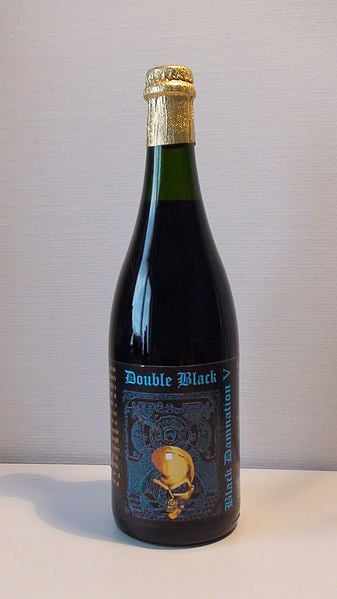
Struise Black Damnation V - Double Black, 26 percent ABV
De Struise Brouwers
Belgium, with rotating availability, recently released in 2019
De Struise, a microbrewery developed by ostrich farmers, creates many types of Black Damnation beers. Black Damnation V - Double Black is an Imperial Stout, which typically has an ABV of 8 to 11 percent. Customers have said this thick, oily beer tastes like molasses, coffee, chocolate and licorice. This dark, well-carbonated beer pours with no head or a tiny tan head and is made using fractional freezing. Customers recommend drinking it in small doses, like 5 ounces. A 750 ml bottle costs around $50.
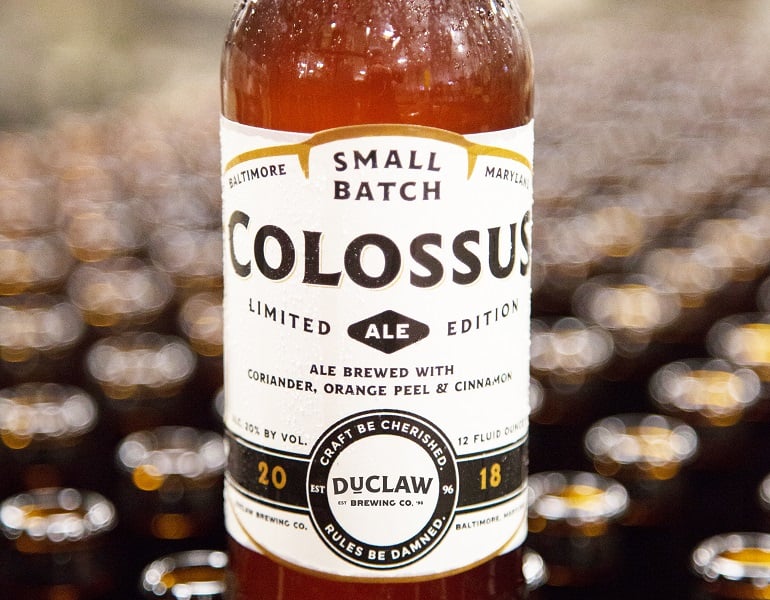
Colossus, between 17.3 to 21.52 percent ABV
DuClaw Brewing Company
U.S., recently released in 2018, will release in March 2020
Colossus is an American Strong Ale that’s twice as strong as usual. The category usually has an ABV of 6.3 to 10 percent. The beer is a clear, dark amber with a minimal or no head. Customers have said Colossus has a light body, with tastes of toffee, caramel, pear and cherry. The beer has a smooth and warming finish with a slight burn.
Dave Benfield, president of DuClaw Brewing Company, said brewing Colossus is a time-consuming process. Every week for over six months, he adds sugar and nutrients to the dark amber ale.
“Usually, the yeast we use dies at about 15 percent alcohol. The trick is adding the sugar slowly to keep the yeast alive. It’s sweet, so we add spices like coriander and cinnamon to create a bite,” said Benfield.
He describes Colossus as “a Belgian hybrid with a sweeter than normal profile, just under a port.”
Benfield said each 60-barrel batch of Colossus is aged in charred oak barrels with three different yeast strains. The best way to drink this titanic Strong Ale is in a 6-to-8 ounce snifter, warmed up.
“If you microwave it for 10 seconds, that’ll bring out a delicious apple pie flavor,” said Benfield.
Colossus is sold in 12-ounce bottles for about $7 to $10 apiece.

The Mighty Oyster, 19.3 percent ABV
Liberati Restaurant and Brewery
U.S., released in 2019
Alex Liberati’s unique, fruity beer has a subtle, briny note from the inclusion of over 150 Prince Edward Island Pink Moon oysters. It is stylized by the Beer Judge Certification Program as an Italian Grape Ale, found on the very last page of the BJCP’s 2015 style guidelines. Typically, such a beer has an ABV of 4.8 to 10 percent. Liberati took on the challenge of creating this extremely high-alcohol beer made with Sauvignon Blanc wine grapes.
“Typically beers made with oysters are stouts, but this is more like a Belgian Golden Strong Ale. We used Diastaticus yeast, which is capable of metabolizing complex sugars,” said Liberati.
To get this dry, fruit-forward beer with “a nice acidity and aromatic notes of apricots and peaches,” you’ll need to come to Liberati’s Denver restaurant and brewery. The beer will be available on tap and maybe in a limited quantity of bottles.
“I was thinking about how perfect the oyster and Sauv Blanc pairing is. That’s what inspired me to make this beer: I wanted to brew a beer with both of the ingredients. I flew them out to the restaurant, and we brewed with hundreds of these small pink, beautiful oysters,” said Liberati.
Liberati recommends drinking the beer at about 45 to 46 degrees Fahrenheit. Good pairings include Pink Moon oysters, table grapes, and aged cheese that would be appropriate with a dessert wine. A pour of 6.75 to 11.8 ounces of one of Liberati’s Italian grape ales ranges between $6 and $12.
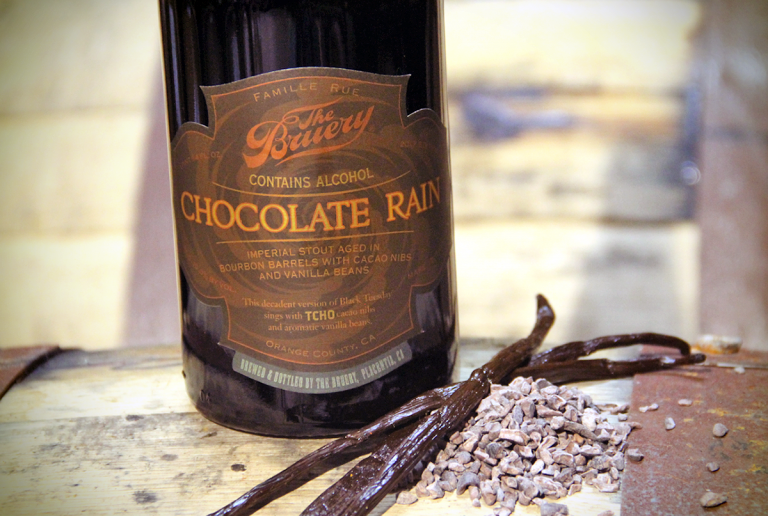
Chocolate Rain, between 16 to 21 percent ABV
The Bruery
U.S., released with rotating availability, with a recent release in 2017
Chocolate Rain is a barrel-aged beer that began as a single cask-conditioned version of The Bruery’s Black Tuesday Imperial Stout. This dark, decadent beer with a relatively thin white head is now aged in specially selected bourbon barrels with fresh vanilla beans and cacao nibs from TCHO, a San Francisco chocolatier. Brewers allow Chocolate Rain to soak up these dessert flavors for several months, later blending the beer to taste. The mixture tastes like chocolate, vanilla, oak and bourbon. It pairs well with cacao nib gelato, Sartori Peppermint BellaVitano cheese, roasted pecans and cocoa chili-rubbed tenderloin.
Customers describe Chocolate Rain as having roasted malt, coffee, nut and caramel notes, with a syrupy texture and a bitter finish. A 750 ml bottle costs between $40 to 46.
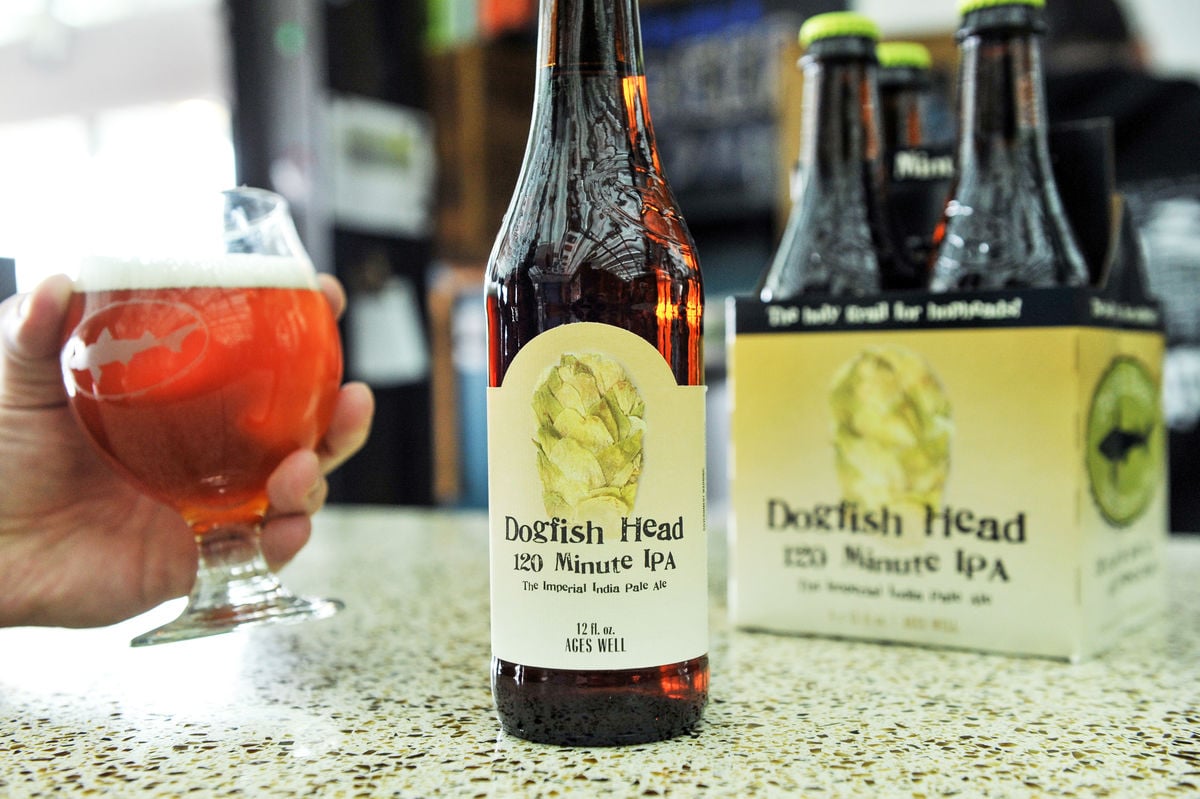
120 Minute IPA, 15 to 20 percent ABV
Dogfish Head Brewing Company
U.S., released several times a year, will be released in September through December in 2019
This Double IPA, which used to be classified as an Imperial IPA, is a strong, bitter IPA that benefits from aging and mellowing. The beer is amber-colored with a white, foamy head. Dogfish Head, which merged with The Boston Beer Company in spring 2019, describes the beer as “the Holy Grail for hopheads.”
120 Minute IPA has “quite a heavy hop charge, with toffee, sherry, and fruity notes. You’ll taste apricot, peach, citrus and pine,” said Mark Safarik, brewmaster at Dogfish Head Brewery.
The brewery’s offering is twice as strong as a normal Double IPA, which usually has an ABV of 7.5 to 10 percent. Safarik gets the alcohol content up by “pushing the yeast to the absolute limit.”
“We add a ridiculous amount of malt and sugar to the beer, generally pitching two to three times the normal volume of yeast. We do some TLC in the fermentation process and then dry hop with a blend of Pacific Northwest hop varieties,” said Safarik.
Safarik said 120 Minute IPA should be consumed at between 55- and 60-degrees Fahrenheit, gently warming up to room temperature.
“It’s a good idea to drink it 12 ounces at a time from a brandy snifter, slowly and with a friend. Good pairings include smoked almonds, smoked meats, grilled lamb and gingersnaps,” said Safarik.
Safarik said fans of 120 Minute IPA often try a bottle upon release and save a bottle to enjoy it in several years.
“You can put it away for between one to 10 years. About three years is good for me. A lot of the heat from the alcohol softens as the beer ages,” said Safarik. A 12-ounce bottle of 120 Minute IPA costs about $15.
For extreme beer fans searching for alternatives with a little less alcohol (but still a massive amount), there are many more options.
Beers with ABVs between 10 and 15 percent include Avery Brewing Co.’s Bon-Bon Cerise at 15 percent ABV, Doggerlander Brewing Co.’s Essus B-Shot at 12 percent ABV and Grand River Brewery’s Triptych Warrior at 10 percent ABV.
“It’s truly a blend of science and art to brew a well-made high-gravity beer,” said Adam Avery, co-founder and CEO of Avery Brewing Company.
What other of the world’s strongest beers did we omit? Let us know some of your favorites in the comments or on social media.



Comments